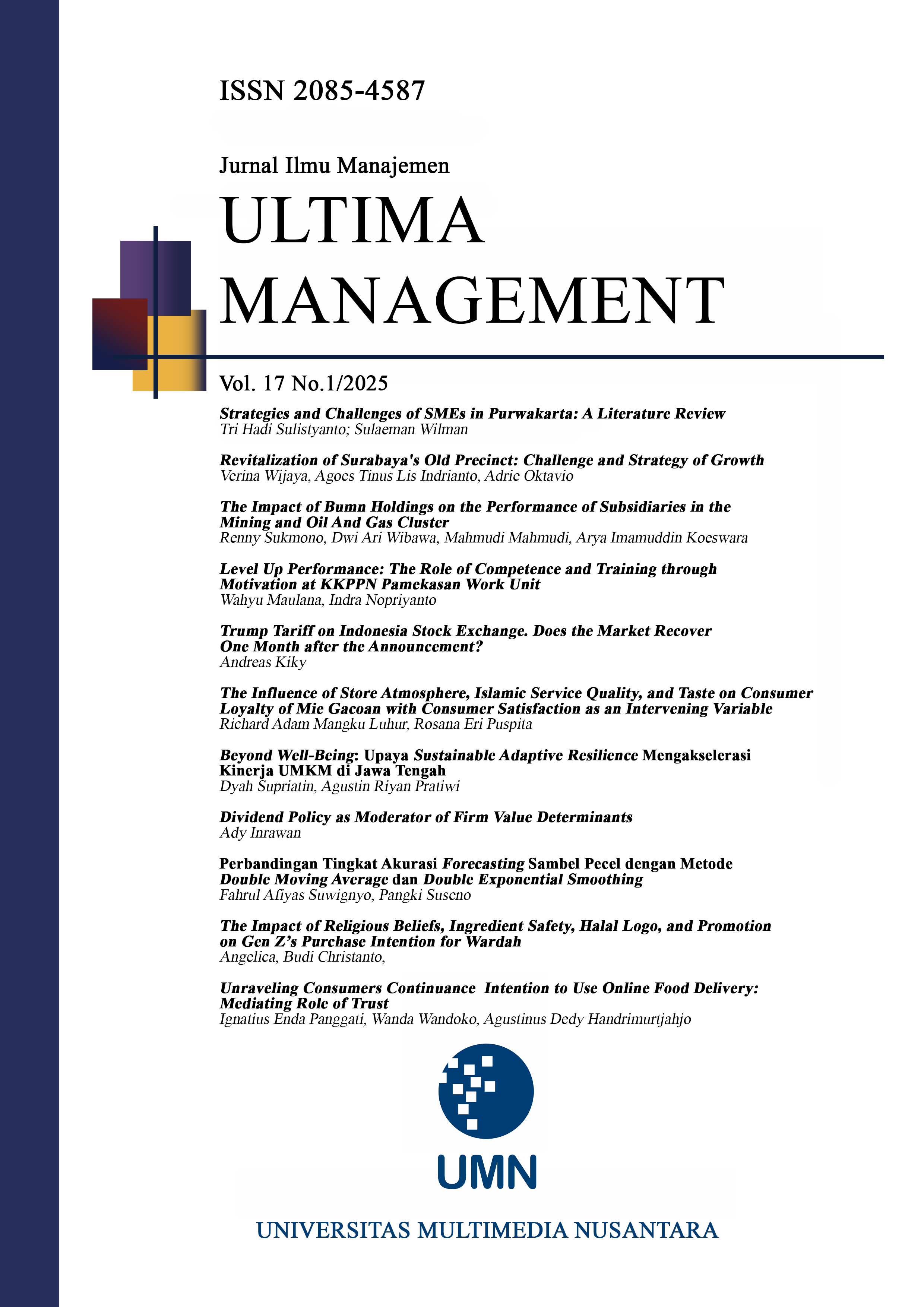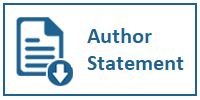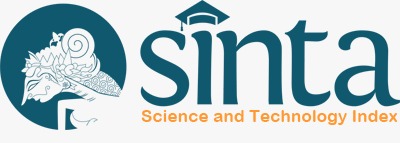DIVIDEND POLICY AS MODERATOR OF FIRM VALUE DETERMINANTS
DOI:
https://doi.org/10.31937/manajemen.v17i1.4205Abstrak
Abstract- This study is to analyze the influence of leverage, firm size, and profitability on firm value, with dividend policy as moderator. Secondary data were used, consisting of financial reports gathered from the Indonesia Stock Exchange (IDX). The study’s population consists of 67 firms listed in the LQ45 Index between 2019-2023. By applying purposive sampling, 19 companies chosen, resulting in 95 total observations. The data analysis utilized is multiple linear regression incorporating a moderating variable (Moderated Regression Analysis/MRA), performed on panel data using EViews 13 software. The selection of the analytical model was validated through the Chow Test, the Hausman Test, and the Lagrange Multiplier Test. The findings indicate that leverage has a negative effect on firm value, while profitability has a positive effect. In contrast, firm size has no significant effect on firm value , the findings indicate that dividend policy moderates the relationship between profitability and firm value. However, dividend policy does not moderate the relationship between leverage or firm size and firm value. These findings suggest that while dividend policy can enhance the positive impact of profitability on firm value, it is insufficient to mitigate the negative effect of leverage or to strengthen the insignificant impact of firm size on firm value
Keywords: Firm Value; Leverage; Firm Size; Profitability; Dividend Policy
Unduhan
Unduhan
Diterbitkan
Cara Mengutip
Terbitan
Bagian
Lisensi
Hak Cipta (c) 2025 Ady Inrawan

Artikel ini berlisensiCreative Commons Attribution-ShareAlike 4.0 International License.
Authors retain copyright and grant the journal right of first publication with the work simultaneously licensed under a Creative Commons Attribution-ShareAlike International License (CC-BY-SA 4.0) that allows others to share the work with an acknowledgement of the work's authorship and initial publication in this journal.
Authors are able to enter into separate, additional contractual arrangements for the non-exclusive distribution of the journal's published version of the work (e.g., post it to an institutional repository or publish it in a book), with an acknowledgement of its initial publication in this journal.















